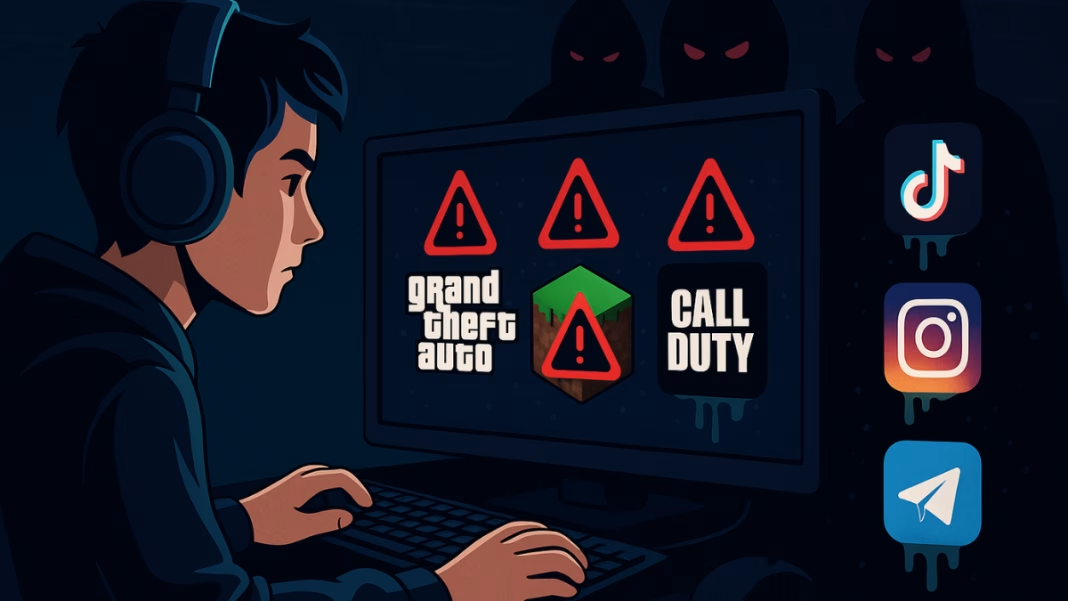A dangerous cyberattack campaign is targeting Gen Z gamers through fake versions of popular video games. Over 19 million attempts to spread this malware were recorded in just one year.
Popular Games Used to Trap Young Gamers
The attackers are hiding harmful software inside what looks like real game installers. Many gamers unknowingly download them while looking for free or modified versions of hit titles.
The top games used in this campaign are Grand Theft Auto, Minecraft, and Call of Duty. These three alone were involved in 11.2 million malware attacks — almost 60% of all incidents. Since these games have large fan communities, they are perfect targets for cybercriminals. Many players look for game modifications, cheats, or cracked copies online. That’s when they get tricked into downloading the malware.
This malware is not just simple spyware. It is part of a much more dangerous and advanced plan. Cybercriminals have upgraded their tools to steal a wide range of information from gamers. This includes login details, messages, and even personal data from social media.
Hidden Malware Spreads Through Forums and Discord
One of the main types of malware in this campaign is called Hexon stealer. It was discovered in November 2024 and is mostly spread through gaming forums, Discord channels, and free file-sharing websites. These are platforms where gamers often chat, share files, and download game tools.
📜 Quiet Towns, Loud Secrets—Brazil Became Ground Zero for Russian Espionage
The Hexon stealer is specially designed to go after young gamers. It can steal data from gaming platforms like Steam. But that’s not all — it also targets messaging apps such as Telegram and WhatsApp. Even social media platforms like TikTok, Instagram, YouTube, and Discord are affected.
This attack is part of what experts call a malware-as-a-service model. Here’s how it works: skilled hackers create malware and rent or sell it to others who don’t have strong technical knowledge. These buyers then spread the malware to more victims. This makes it easier and faster for attacks to grow and reach more people.
Because of this setup, new hackers can quickly launch attacks without writing any code. That’s one reason why the malware campaign has become so widespread and dangerous.
Malware Hides Itself and Evades Detection
The most worrying part about this malware is how well it hides itself. After its first version was discovered, the makers changed its name from Hexon to Leet. This new version is smarter and even harder to detect.
The malware can now check if it’s running inside a virtual machine a kind of test environment that security researchers use to study viruses safely. If it detects that it is being watched, it shuts itself down right away. This trick helps it stay hidden and avoid being caught by cybersecurity experts.
Invisible Invasion? Spy-Like Google Ads in Iran Spark Fears of Psychological Warfare
It also checks the infected computer’s internet address, hardware details, and running software. These checks help the malware decide if it is safe to keep running or not. If anything looks suspicious or like a test setup, it simply stops working.
Because of these tricks, the malware stays active only in real users’ systems. It avoids fake environments where security teams might try to trap it. This makes it incredibly hard to track, study, or stop.
The malware can steal a lot of private data while staying completely hidden from most antivirus tools. This includes passwords, account info, and chat messages. The damage can be serious, especially for young users who may not know how to protect themselves online.
